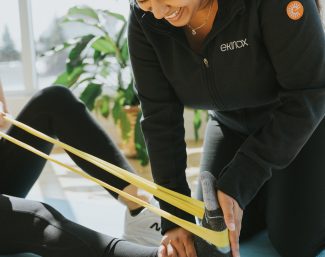
Are you interested in the dry needling physiotherapy puncture approach? Here is what to expect from your physiotherapy sessions.
Your initial physiotherapy appointment will be very important. You will assess your goals and objectives with your physiotherapist to validate if you are a good candidate for needle therapy. The purpose of the assessment is to collect subjective and objective measures of comparison to see how effective the needle treatments are in future sessions. The physiotherapist also assesses your apprehension of needles. Are you afraid of needles? Have you been known to go into vagal shock? If the answer is yes, we will take precautions to ensure that the treatment remains safe and reassuring for you. The final step is to make sure that you have no contraindications to needle treatments.
Contraindications for the use of dry needling physiotherapy:
- Pregnancy
- Children under 14 years old
- Prosthesis (from 6 weeks to 3 months)
- Alcohol / drugs
- Fever
- Hemophilia
More local contraindications:
- Burns / skin grafts
- Lymphoedema
- Local corticosteroid infiltration
- Local infection
- Hypoesthesia (decreased sensation)
- Systemic vascular problems (diabetic foot, vascular insufficiency, varicose ulcer, severe edema, etc.)
The use of dry needling is a good addition to physiotherapy treatments. It is rare that we work only with needles without giving you advice, exercises and also without manually working your musculoskeletal system.
What do you need to know about needles before your treatment?
The puncture at the muscle level may reproduce the pain or sensation of the consultation either locally or at a distance, which means that the targeted structure has been reached. Muscle twitching may also be noticed. You may notice sensations locally and at varying distances: pressure, numbness, heaviness, a stinging sensation or even cold. These are all very normal and are even desired sensations with the treatment.
The analgesic effect created by the needle can bring almost instant relief from pain after the puncture. However, the most common response immediately after the technique is a sensation of soreness. This sensation can last up to 48 hours after the treatment and then diminishes to give way to relief of the initial pain of consultation. Therefore, your physiotherapist will strongly recommend that you rest after your sessions to better benefit from the therapeutic effects of the needles. It will also be recommended that you use heat to counteract the effect of soreness. A short 15-20 minutes of heat at the puncture site can be very beneficial post treatment.
It is important to remember that dry needling is used in addition to other modalities to alleviate symptoms related to local inflammation. Are you curious or do you have questions? Don’t hesitate to make an appointment with Celia, she will be happy to meet with you and give you more information on the dry needling technique!





